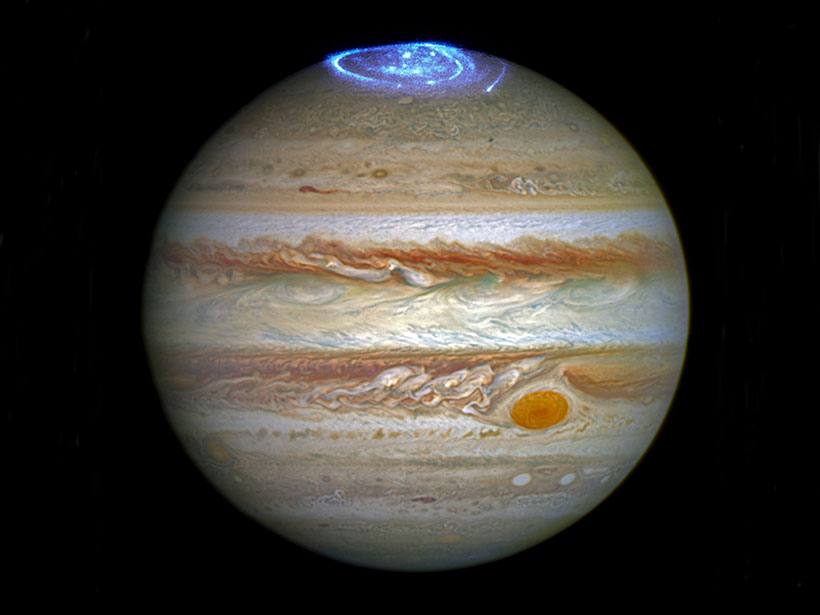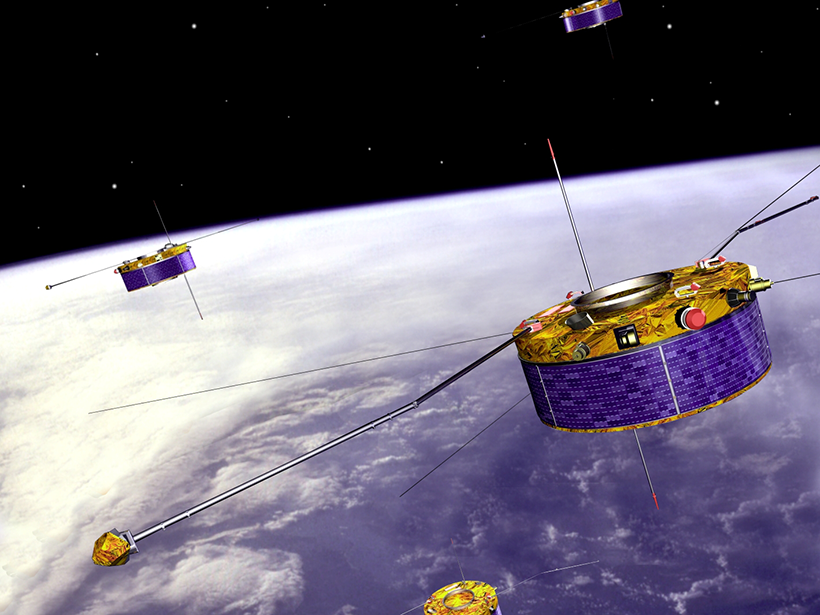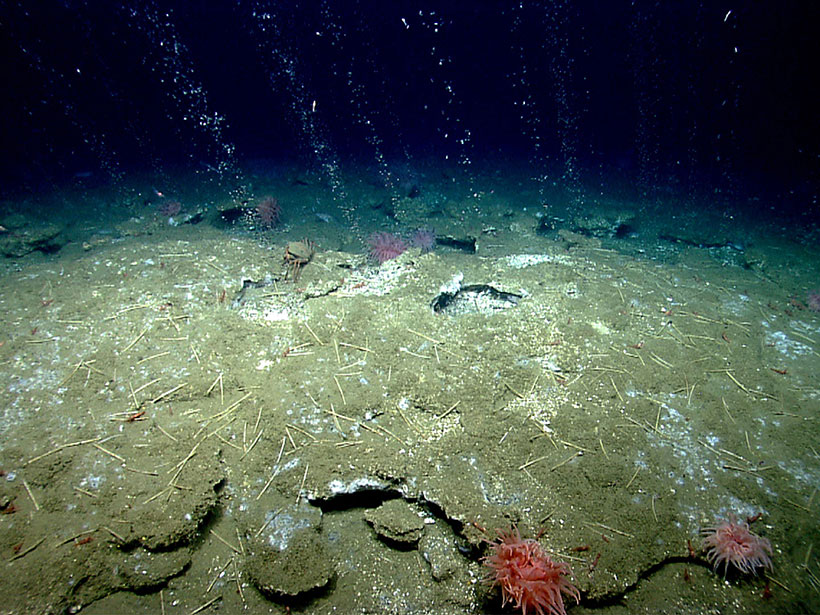Magnetic reconnection events less than 2 Jovian radii above the planet’s cloud tops could explain why Juno has yet to observe a source for Jupiter’s polar aurore.
Morgan Rehnberg
Understanding Aurora Formation with ESA’s Cluster Mission
Over 2 decades, Cluster has shed light on the auroral acceleration region, where parallel electric fields send charged particles on a collision course with the atmosphere.
Does the Priming Effect Happen Underwater? It’s Complicated
A new meta-analysis finds evidence that adding fresh organic material can increase decomposition rates, but when and why that happens remain unclear.
Ice Lenses May Cause Many Arctic Landslides
When permafrost thaw reaches concentrations of ice underneath the surface, it may trigger local soil instability.
树木年轮显示了最新发现的极端太阳活动事件记录
对树木年轮物质的光谱分析表明,碳-14浓度在一年内急剧上升,这与发生在公元前5410年左右的极端太阳高能粒子事件相一致。
Improving Weather Simulations Through Increased Generality
By adding support for spatially variable velocity fields and anisotropy, the CoSMoS simulation package can more accurately reproduce physical phenomena.
Tree Rings Show Record of Newly Identified Extreme Solar Activity Event
Mass spectroscopy of tree ring material indicates a sharp, single-year rise in carbon-14 concentrations consistent with an extreme solar energetic particle event that occurred around 5410 BCE.
Juno Detects Jupiter’s Highest-Energy Ions
Trapped ions discovered at midlatitudes can have energies exceeding 100 megaelectron volts per nucleon. Their detection adds to our understanding of the powerful radiation environment around Jupiter.
A New Approach to Calculate Earthquake Slip Distributions
A transdimensional, probabilistic approach is more flexible than traditional least squares fits and provides better handling of sharply varying slip distributions.
A Closer Look at the Creation of a Metamorphic Sole
Detailing the development of the metamorphic sole beneath the Oman–United Arab Emirates ophiolite provides insight into subduction zone processes.










